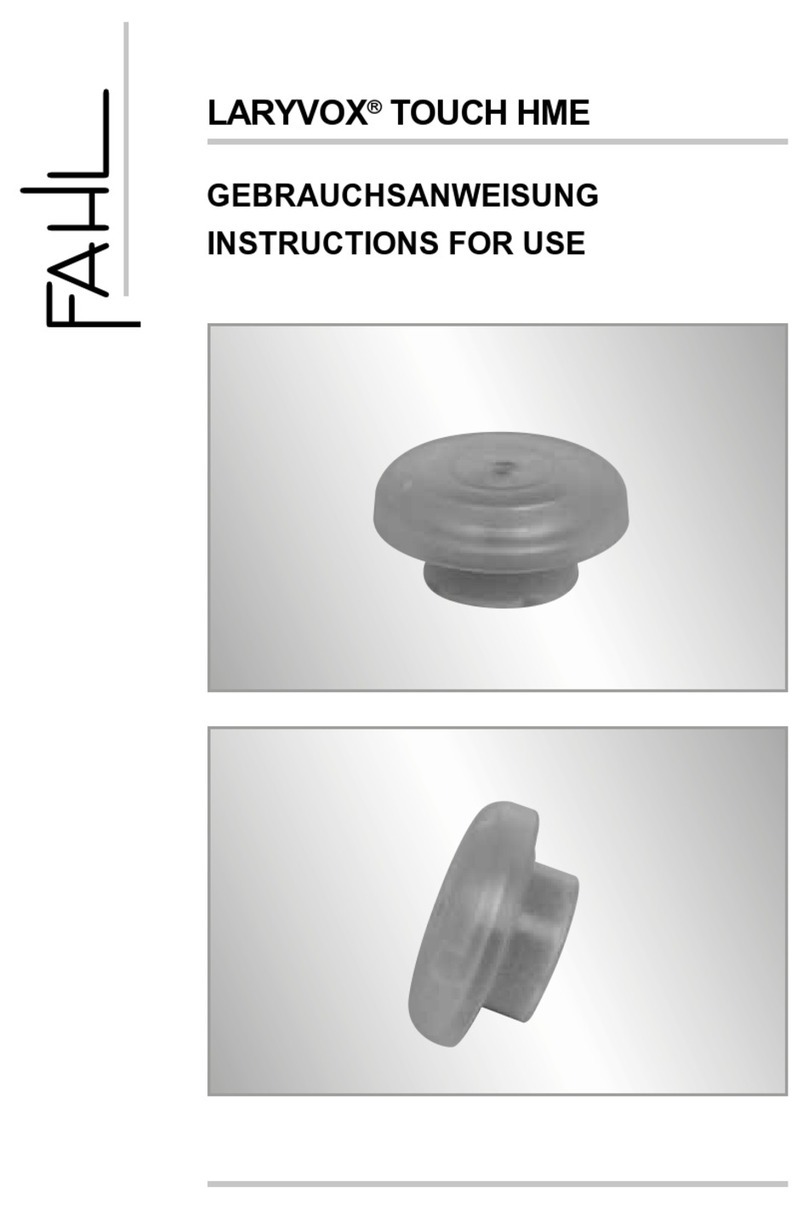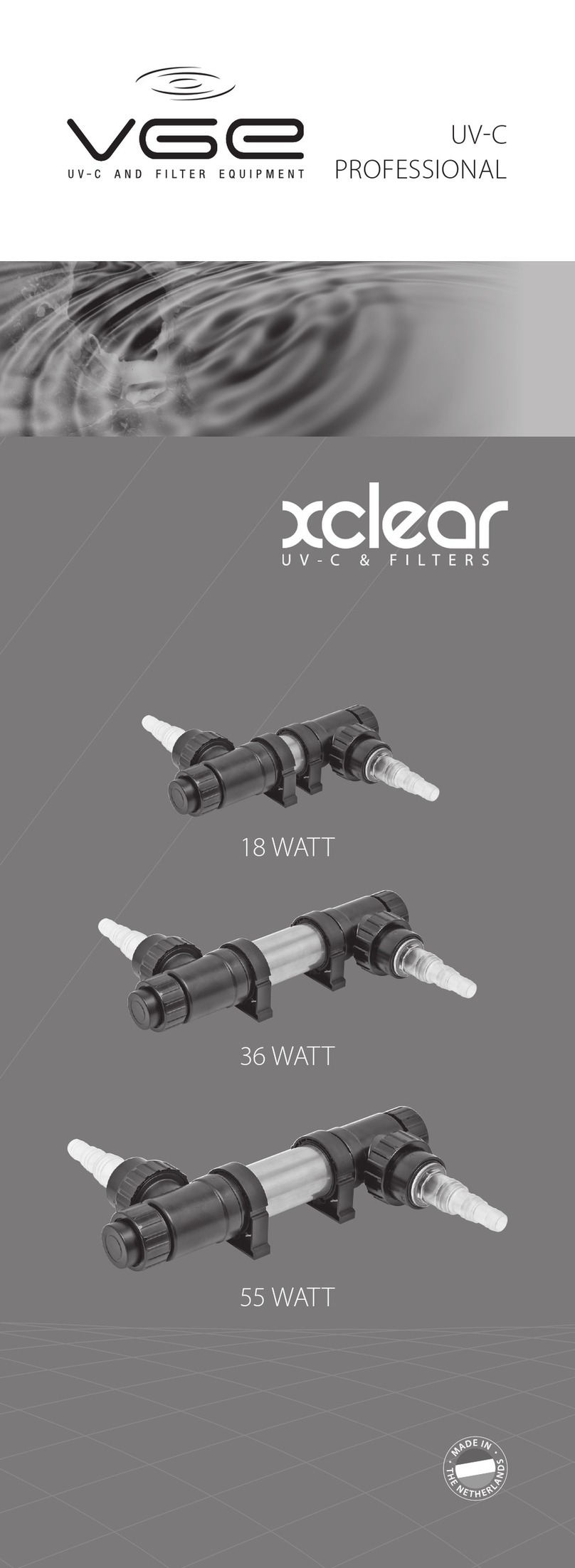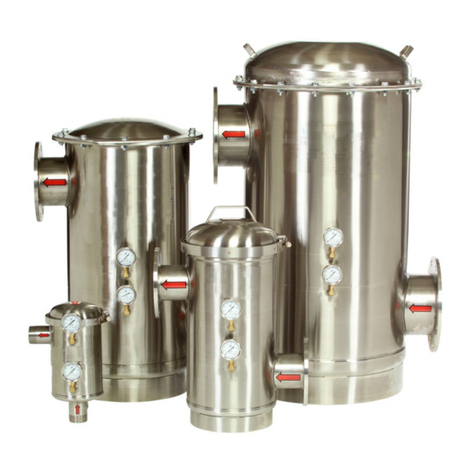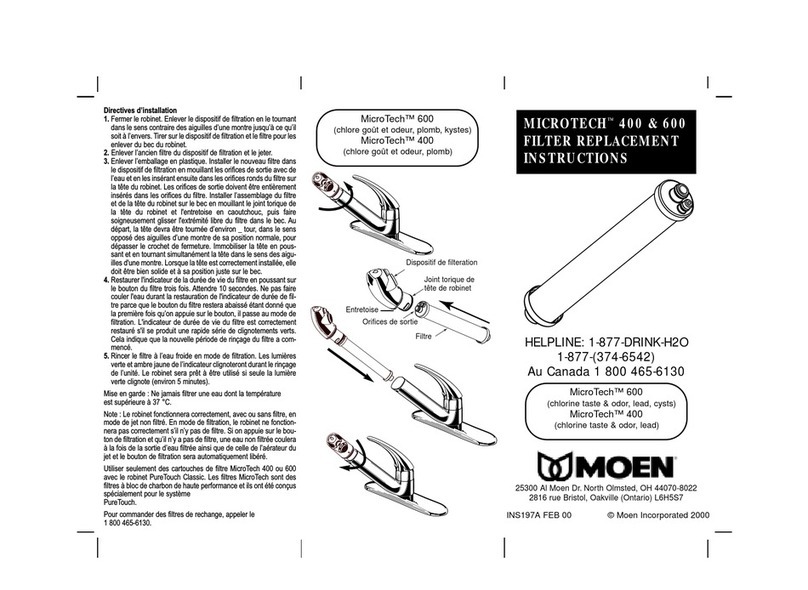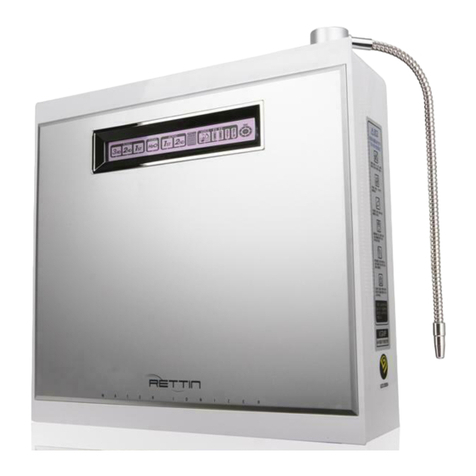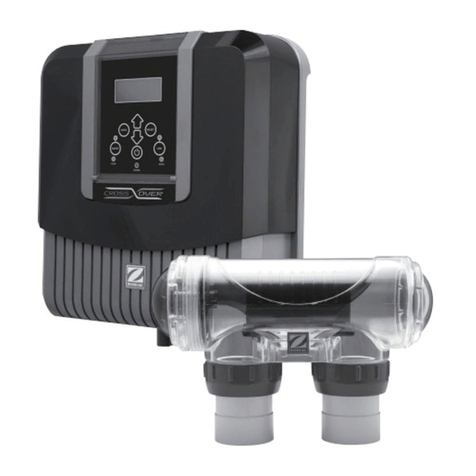IGS MBG-N5.5 User manual

OPERATION AND
MAINTENANCE MANUAL
Version 2
April 2019

This Operation and Maintenance Manual is for use with the IGS Microbubble
Generator (MBG) and provides the necessary information to successfully install
and operate the unit in accordance with manufacturers direction.
The MBG unit consists off
Full metal casing with vents
Priming pump
Main cavitation pump specifically designed to purpose
Cavitation cylinder and pressure gauge
On board electrical control enclosure
Actuators to assist in control of unit for bubble generation
Suction hose that connects foot valve to inlet
Suction Hose that connects foot valve to primer pump
Foot valve in cage
High pressure delivery hose with diffuser
Model Reference
The model reference for this product is
IGS MBG-N5.5
Positioning Requirements
The IGS Microbubble Generator is designed to sit above the water level of the
water body to be aerated. Both suction and delivery hoses need to downwards
to the water. Under no circumstances should these hoses be raised above the
unit itself - e.g., over the top of a tank. To do so reduces the efficacy of aeration
substantially.

MBG Enclosure:
The model is as shown to the left. The
stainless-steel cabinet that houses pumps,
electricals and controls is a rectangular box
type product with opening front doors. These
doors are opened to start/stop the operation of
the unit and to adjust for correct pressure.
Both sides of the enclosure have vents
positioned and the rear of the enclosure is
mainly a single sheet with cut outs at the
bottom to access plumbing. The base is open.
The unit is designed to operate in such a way
as to allow ventilation of heat out of the
enclosure and be able to successfully operate
outside in all weathers.
The product requires mechanical lifting equipment to place into position or shift
from one position to another. It is feasible to bolt the frame to a specifically
sized pallet to allow easy movement by forklift.
The unit shown above has protective coverings on the outside and the unit that
you receive may have some of this protection or it may be removed. Your unit
will have a IGS Water signage on it with contact phone numbers and web
details.
How to connect the delivery hose:
Note: It is recommended that the delivery hose is connected to the correct
fitting on the side of the unit prior to connecting the suction hose.
This is to allow easy tightening of the delivery hose without risk of damage to
the suction hose.

Always ensure the washer is inserted into the hose connection to prevent
leakage
Shown here is the delivery hose
connection. The delivery hose is a
high-pressure hose which is screwed
onto the connection found at the left-
hand side of the unit in the lower left
corner.
Connection is a simple thread
connection. Insert the washer to
prevent leaks, screw connect the
fitting to the tread on the pipe from
the unit and tighten with a suitable
tool.
You only need to tighten to a normal tightness for this type of fitting. There is
no set tension required for this connection. If, when the unit is operating, this
connection leaks, check for tightness. If unit continues to leak, then shut down
and remove the delivery hose and check for damage to the seal. If seal is
damaged, replace seal and reconnect.
How to connect to the water source:
The water source for the product will generally be the same water that has
oxygen delivered back to it, although not always. For example, if the product is
used in an aquaculture sea cage, the water source will be the ocean water beside
the unit. If in a land-based prawn farm, it will normally be water drawn from
the prawn pond. If used in agriculture irrigation, water would normally be
drawn from the irrigation supply channel or head ditch and may be delivered
into a head ditch or direct to field.
Connection of the suction lines requires the connection of two hoses –one hose
to the priming pump and the other to the main inlet

Shown at left is the foot valve connected and
lying on the bottom of a tank.
At the top of the picture, you can see there are
two clear hoses connected to the foot valve.
Connect these two hoses to the foot valve with
the larger hose connected to the applicable
piping and the smaller hose connected to the
smaller pipe.
Secure both hoses with the supplied clamps
and tighten to a normal tightness for this type
of fitting. There is no need to overtighten
either of these connections.
The other end of the larger hose is connected
to the fitting found on the lower left side of
the unit and inside the unit. Feed the hose
though the hole provided. This connection is
in front of the discharge connection and is
easy to recognise as it is a push on fitting and
not screwed on.
As with the foot valve, use the supplied clamp
to tighten the connection. Normal tightness is
sufficient and there is no need to overtighten.
The smaller suction hose is connected to the
primer pump as shown here. Feed this hose
through the hole provided on the left-hand
side of the unit and connect as shown in the
photo to the left.
As with the other clamps tighten as needed
without over-tightening.

Have the orange valve fully open:
If this valve is included in your unit, ensure
it is fully open during operation. This
ensures the valve does not throttle the water
flow in any way. The photo at left shows
the valve partially closed –make sure this
remains fully open during operation.
Connection of electrical power lead:
The orange power lead shown at left at the bottom
of the electrical board needs to be connected by an
authorised electrician and has enough length to
allow you to connect to a three-phase electricity
supply.
If additional length is required if the unit is relocated
this can be achieved using a three-phase extension,
making sure that any connection is kept out of water
that may be around the unit.
Connection is simple and if in doubt seek the advice
of an electrician.
Once the above connections are made with the unit in a stable upright position
you will be ready to turn the unit on and commence the production of
microbubbles, which will in turn break down to nanobubbles. Double check all
connections at this point.
Lower the foot valve with the two hoses connected into the water source.
Make sure that the cage is suspended in such a way it can operate without
obstruction or is sitting comfortably on the base of the water source if a tank.
To start the MBG:

On the front of the electrical box is a switch. To switch one way is to start the
unit automatically, and to switch the other is manual. This switch has a sticker
showing which way is which.
Turn the switch to automatic, after ensuring that the foot valve is in water.
Primer pump starts first:
At left is the primer pump. You will hear this pump
start and it will prime the main pump which will not
start immediately. Do not worry if the main pump
does not immediately start as it will come on line
once priming is complete.
This primer pump has a dual purpose –one is to
prime the main pump at start-up, and the other is to
prime the main pump during operation as required.
This process is automated and requires no operator
intervention once the switch is turned on.
It can take a short time for the primer pump to fully prime the system and you
just need to wait for this to happen.
Main pump will then start:
Shown at left is the main pump within the system.
This pump is behind and to the right of the blue
primer pump and is named Leo on the top of the
pump.
This pump will start automatically once the system
is primed and it is correct for it to start. No operator
action is required to have this pump start once the
switch is turned on.
This pump is in continual running whilst the system
is in use.

Should it stop operating check the water supply is still OK and start again. If the
pump still does not work the electrical supply will need to be checked. If the
electrical supply is found OK, then contact IGS for further assistance.
Actuators:
These actuators are critical for the
operation of the system. The actuator on
the right has a tap below it (behind the
wiring), which brings air in from the side
(blue open plug) and has a set screw
adjustment on the top.
There is no need to adjust the left-hand
actuator. Take care as this actuator does
get hot. You will not need to adjust the
right-hand actuator, only the air valve.
Cavitation cylinder:
The cavitation cylinder is a critical operational
component of the product for the creation of
microbubbles. It is found at the rear of the unit on
the left-hand side, under the electrical enclosure.
On the top of this cylinder is a pressure gauge
which will need to be checked in operation, with
adjustments made on the air intake actuator.
No other operator input is required for this cylinder.

Use of pressure gauge on top of cylinder:
This pressure gauge needs to show an
operating pressure of 0.7 for the unit
to be creating microbubbles at the
highest efficiency.
In start-up operation the pressure will
read anywhere either side of 0.7. An
operator needs to adjust the air flow
to achieve a 0.7 reading on this
gauge. No other action is required
for this cylinder or gauge except to
check the pressure now and then.
Note: to adjust the pressure you need to adjust the air intake actuator.
Adjusting the air intake actuator:
The air intake actuator is the right-hand side
actuator which has the blue open plug injected
in the right-hand side of the pipe above the
actuator.
To adjust the pressure in the cylinder, open
the red handle tap that can be seen behind the
wiring at the front of the actuator. Open this
tap fully by pushing it toward the bottom of
the unit until it is in a vertical position.
Next turn the set screw at the top of the pipe
shown here and adjust by raising or lowering
the screw until the pressure on the gauge is
showing 0.7.

Once achieved, then tighten the lock nut by screwing down until tight against
the base, but not that tight to cause damage to the screw or locknut.
Allow the unit to run for up to five minutes with regular checks on the pressure
gauge. Once you are comfortable the pressure is constant at 0.7 on the gauge
then the adjustment is complete.
How to know if the unit is producing microbubbles:
Look for white clouding in the water body
assuming it is clear enough to see this as
shown in the tank at our R&D centre. You
will see this milky clouding occurring in the
water.
These microbubbles will clear once the unit
is turned off as they break to nanobubbles
and both remain in the water as a ‘bank of
air’ for some considerable time.
Maintenance:
The Microbubble Generator is designed to operate with minimal operator action
and should continue to produce microbubbles consistently once stared until
switched off.
Regular checks that need to be conducted are:
Foot Valve Cage:
Ensure the foot valve cage is not blocked by a build-up of rubbish. If this cage
cannot be seen, turn the MBG off at the power source, raise the cage and check.
If blocked or partially blocked clean the cage off with a water jet, brush, rag or
similar. Once clean insert back in the water and restart machine.
Note: After each restart check the pressure on the cylinder gauge and adjust as
necessary.

IGS recommends a log of cleaning frequency is kept assisting in knowing how
often this needs to be cleaned. Each water body has different amounts of
organics and particles in it and as such there is no set procedure. Dirty water
will require more frequent cleaning than cleaner water. Common sense needs to
be applied to the cleaning regime to ensure long term operation of the product in
situ.
Pressure Gauge Check:
Checking of the pressure gauge to show a reading of 0.7 should happen every
couple of hours if possible or daily as a minimum to ensure the unit is creating
microbubbles at its optimum capacity.
If it is noticed this tends to change check the lock nut has not worked loose. If
it has, readjust, and retighten the lock nut. Also check the foot valve cage is
clean.
General Check:
A general check of the overall unit should be conducted each day. Look for
loose connection on the suction pipe and tighten the clamps as necessary.
Check for leakage at the delivery pipe and tighten if necessary.
Check power lead connection for damage and tight connections.
Check all electrical leads and connections contained within the unit are not
showing signs of damage. If damage is noticed contact an authorised electrician
for repair to damaged parts.
Wipe down unit occasionally in general cleaning
Table of contents
Popular Water Filtration System manuals by other brands

Lincoln Electric
Lincoln Electric Mobiflex 400-MS instruction manual
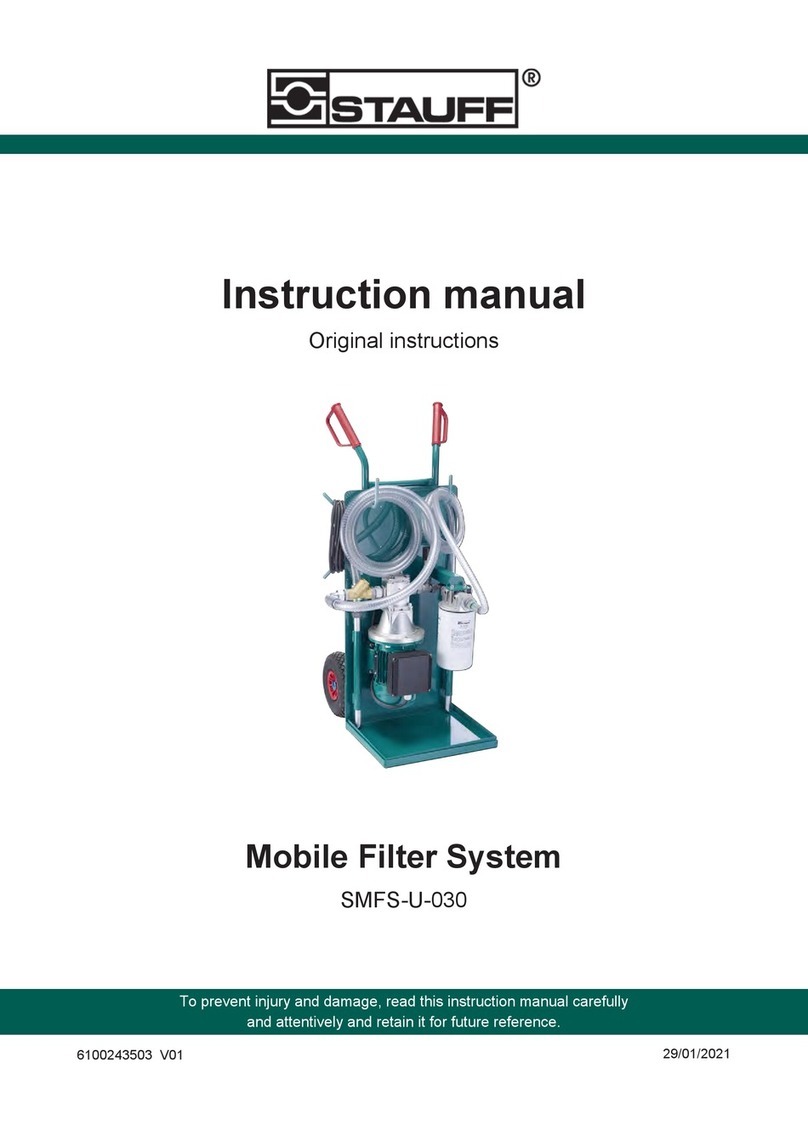
STAUFF
STAUFF SMFS-U-030 instruction manual
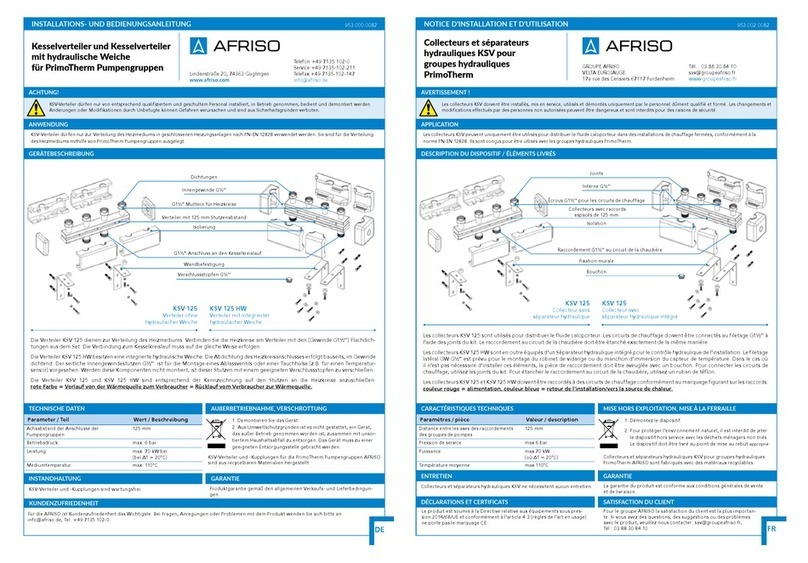
AFRISO
AFRISO PrimoTherm KSV 125 instruction manual
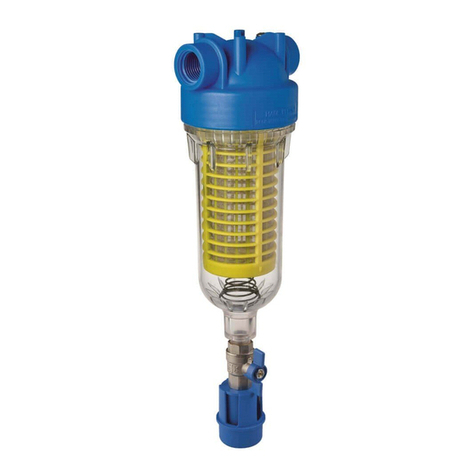
Atlas Filtri
Atlas Filtri HYDRA M Installation, use and maintenance manual
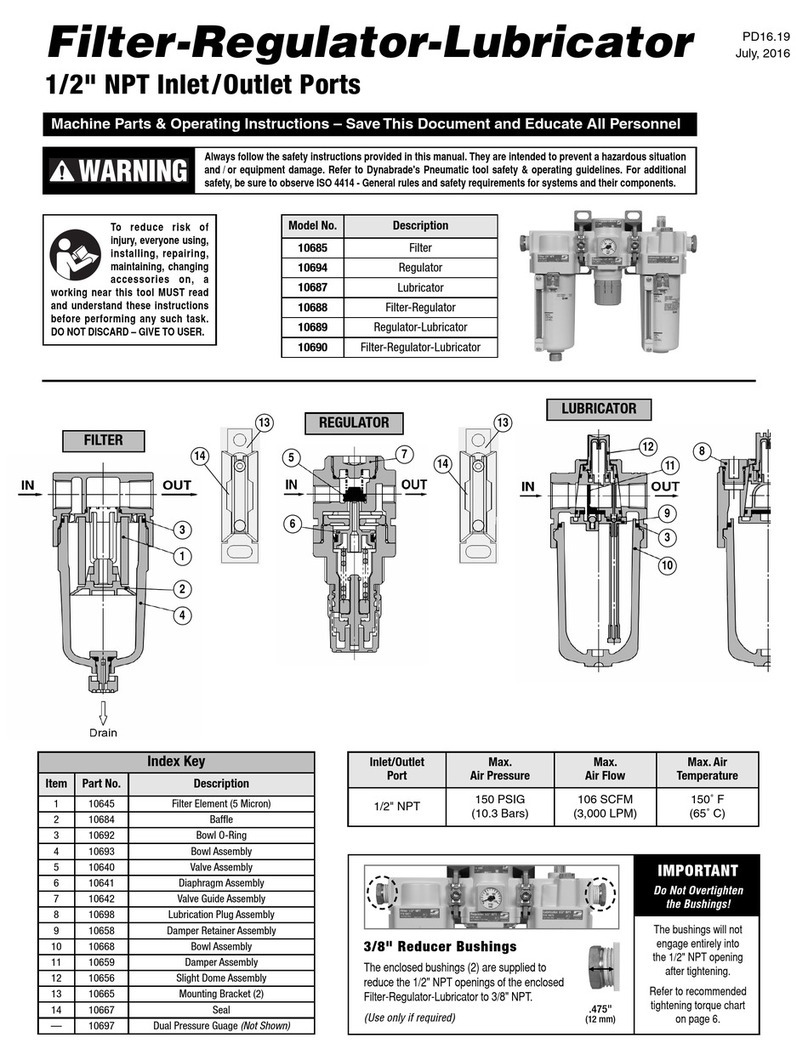
Dynabrade
Dynabrade 10685 Machine Parts & Operating Instructions
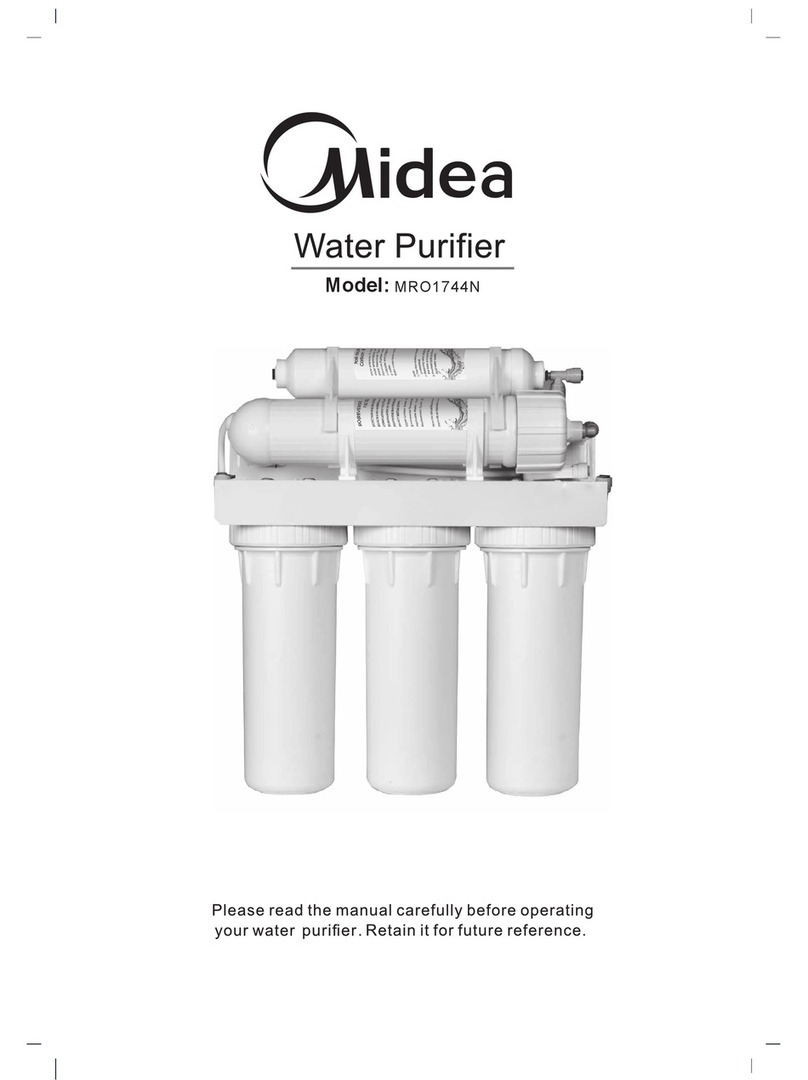
Midea
Midea MRO1744N manual


